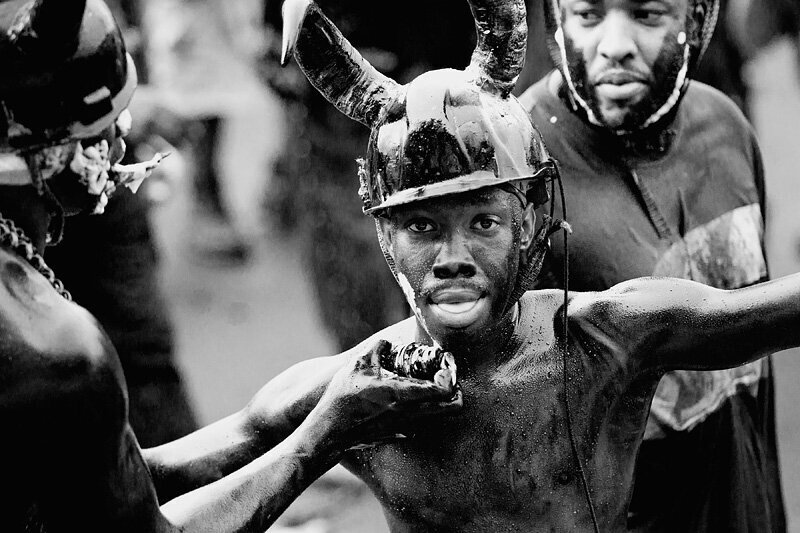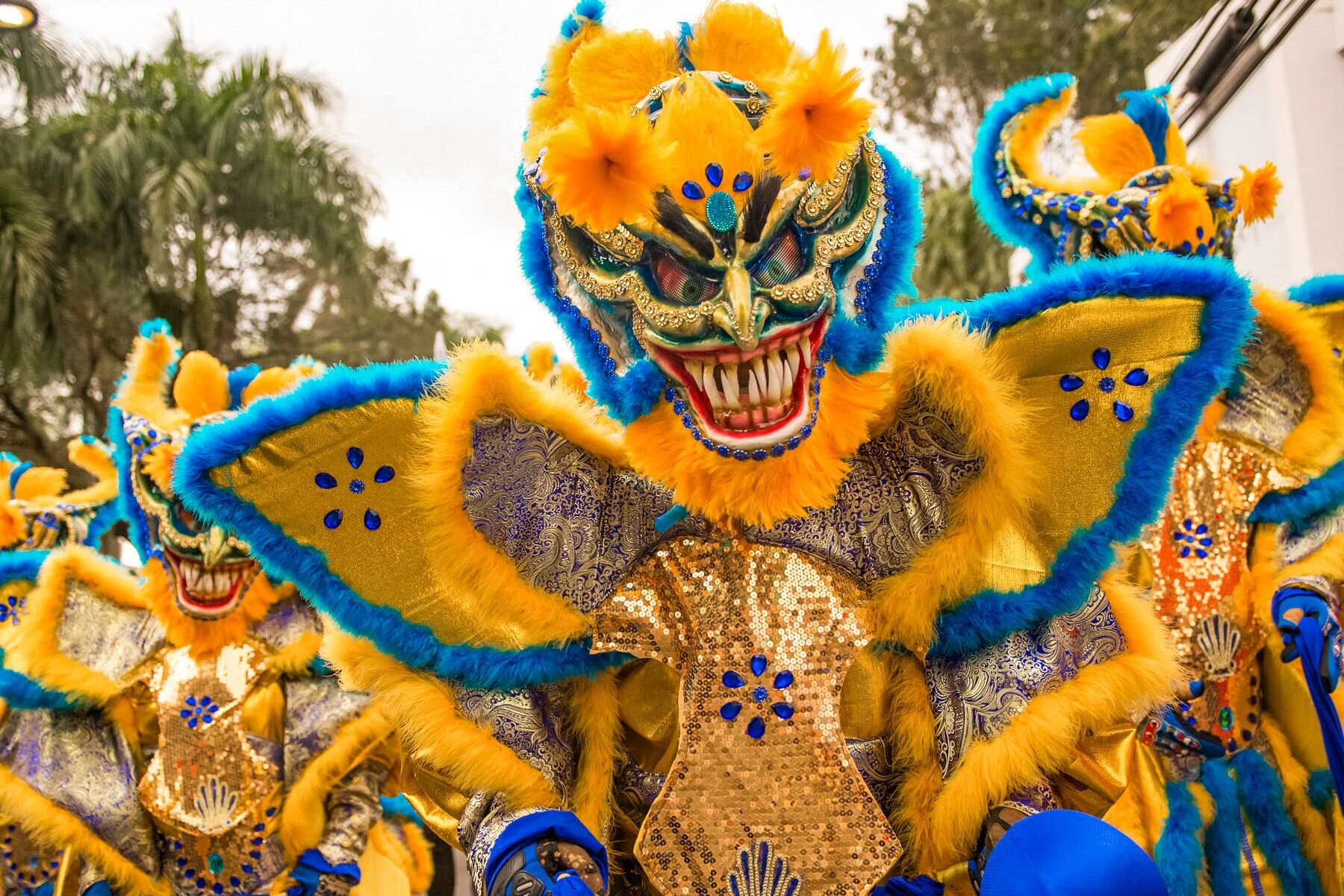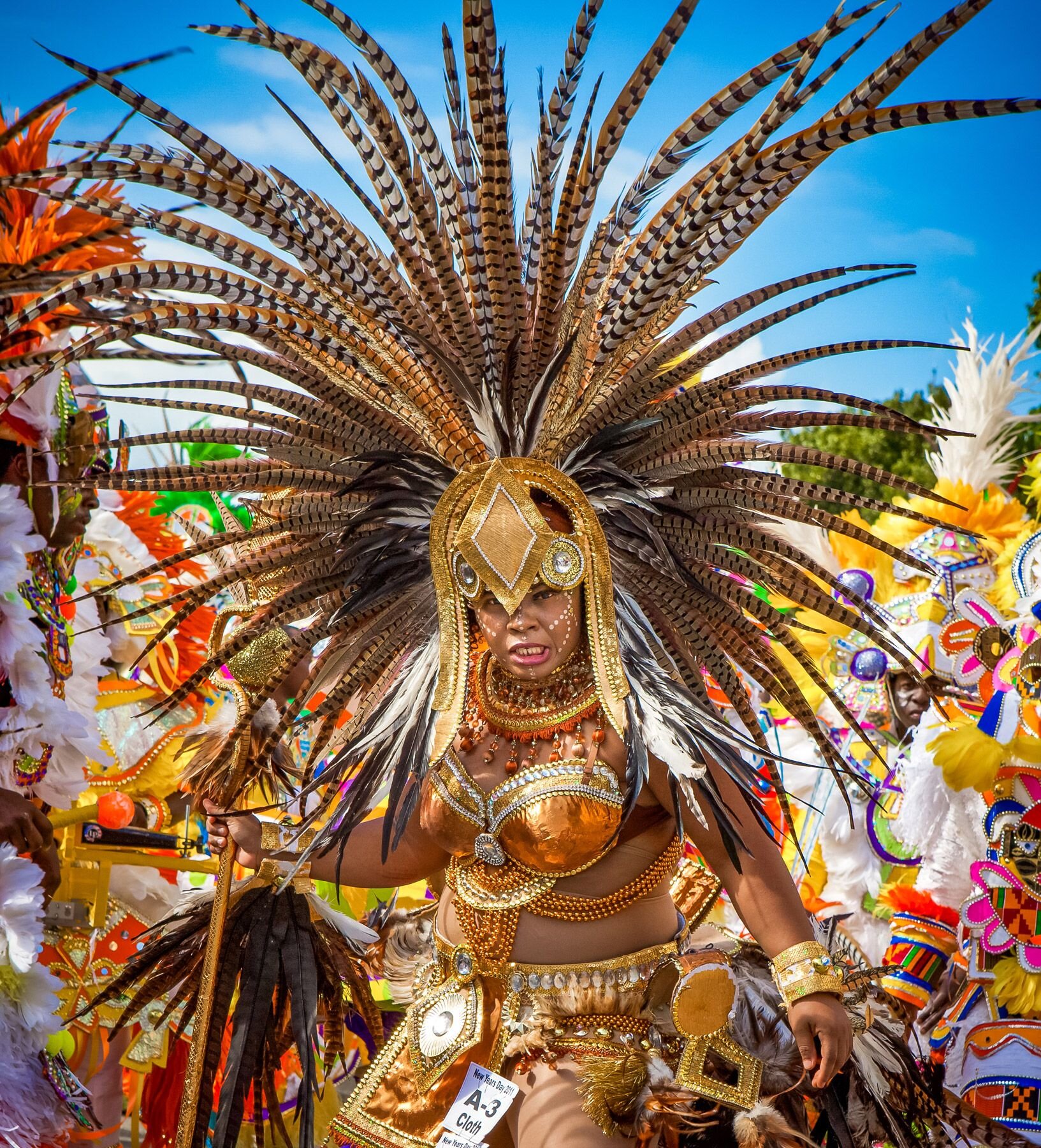Carnival: An Art form Of Resistance -PART 1
While we may not be covered in paint, adorned with colour and whining on the road at Carnivals this year, the spirit that drives it is eternal and the history behind it ever-present. Carnival costumes are an integral element of the event both historically and within the present day. In an effort to place context and sentiment behind the costumes I've spoken to two women who have participated in Carnivals both within the Caribbean and UK. Focusing on the importance of the Carnival costumes, craftsmanship and maintaining legacies. The first woman I spoke to was Fiona Compton; mother, educator, artist and bacchanalist enthusiast, who also runs the educational Instagram account Know Your Caribbean. The second woman was mother, poet and creative, Maria Martinez De Souza, who was a Carnival event organiser and manager of a large mas band in Trinidad.
Carnivals are known as colourful parades filled with rhythmic music and masquerades. Within Caribbean culture, Carnival has been an annual event since the 18th Century when European settlers first brought the festivities to the islands of Trinidad and Tobago. It was seen as the final “farewell to the flesh” before Lent, which is known as a six week period of fasting, abstinence or giving up of worldly desires. The week leading to Ash Wednesday would consist of using up rich food and throwing lavish partiesbefore their period of self-discipline. However, it was only the Europeans and free slaves who would partake in activities, dressed in costume and hidden behind masks. In his book, Venice Incognito James H.Johnson said that ‘the mask's anonymity was a ticket to liberation,’ which is a feeling that would attach itself to Carnivals across the globe in years to come. When I asked what Carnival meant to them Fiona said ‘Carnival is my spiritual mecca. I knew it was a spiritual thing before I even connected the dots, before reading the history. I grew up in St. Lucia and Carnival is around you all the time, there’s a lot of preparation. We have not always associated Carnival with spirituality in our discussion but we have felt it. When you hear people talk about it they say it's an indescribable experience, you just have to be in it. Is that not what a spiritual experience is?’
One of Maria’s first memories of Carnival was at age 9 playing kiddies mas at school, her theme was “breaking the rules”. Dressed in her PE kit decorated with ribbons she got on stage with a friend to jump to the music before snapping their wooden rulers into pieces – “This is Maria Martinez and she is breaking the rules!” Maria discusses that although the arts and music is the first step in, the history of Carnival is taught throughout education and that ‘when you learn the foundation of this festival and the celebration of freedom, it never leaves you.’ So when faced with the same question she said ‘the essence of what Carnival represents for me was just as important as casting a vote, your democratic right. We as a Caribbean people this is our right, we can go in the streets on this day and become a character. It's a freedom of speech, a freedom of expression, a freedom of colour. Letting yourself be in that moment, who you want to be, showing your peers, neighbours and the world we’re free, we’re emancipated.’
In the 18th century for the slaves who couldn't engage they would watch from their homes and throw celebrations of their own.They would re-enact the burning of sugar canes known as Cannes Bruleés, and ridicule the slave owners who were participating via theatrics and clothing. Dame Lorraine is an example of this, Max Harris quotes ‘mocked the pretensions of foreign planter wives and their well-to-do descendants.’ In the spirit of Carnival the use of masks and costumes as explained by James Johnson also ‘conferred on its wearers a power to be anyone they wished, a cover to speak the truth, flaunt convention, throw off hierarchy.’ Thus when the emancipation bill in 1833 was passed, Carnival gradually became an integral part of Caribbean culture, adopting different costumes and traditions throughout the islands.
When asked about the significance of Carnival costumes Fiona said you’re looking at three things, in a historical sense ‘for one it is the masquerade, you can see elements of African traditions of our ancestors.’ As highlighted by Maria ‘some are light, some are bright and some are dark.’ She listed characters such as; La Diablesse a woman of the night dressed in a wide-brimmed hat and flowing gown who lures in unsuspecting men, Douens who are childlike characters with their feet turned in, Midnight Robbers a representation of death and Minstrels who mocked racism with their powdered white faces. Secondly, Fiona highlights that West Indian people are storytellers, ‘Carnival is political commentary and one of the things we have is old mas where you’ll see traditional mas characters representing colonialism. People also have placards with witty slogans mocking political stories that are happening at the time.’ The third element is Carnivals intention to offend the upper class, ‘it represents the opposite of oppression, the freedom of movement, music, song and dance.’
Looking at the bikini style Carnival costumes known as pretty mas that’s popularised today it is clear to see that they differ from the outfits aforementioned, as quoted by Maria ‘at some point the traditional was separated from portrayal and fashion stepped in. We have moved away from the historical designs of our Caribbean people and peaked through Brazil's windows.’ Although you may see designs inspired by African spirituality such as Orishas, Fiona said ‘I’ve never seen a commercial mas band make a modern-day interpretation of a Caribbean traditional mas character.’ Fiona discusses that when she puts on a costume she wants to encompass the character she's playing ‘Carnival is about transforming into something else and playing a character is integral and only enriches your experience. It's a performative art.’ Whilst the motto of “sex sells” is what has ultimately shifted the designs, Fiona makes it clear that ‘you can still be sexy and traditional’ mentioning designers such as Melissa Hartman and bands like Lost Tribe as examples. ‘I just want us to become storytellers again.’
Some may say Carnival is more than meets the eye, however when you look with knowledge and intrigue you can immediately see an abundance of history, culture and emotions. In part two we discuss how to ensure the roots of Carnival aren’t hidden underneath the soil of commercialisation, but instead widely and proudly known by both Caribbean people and those outside of the culture.






